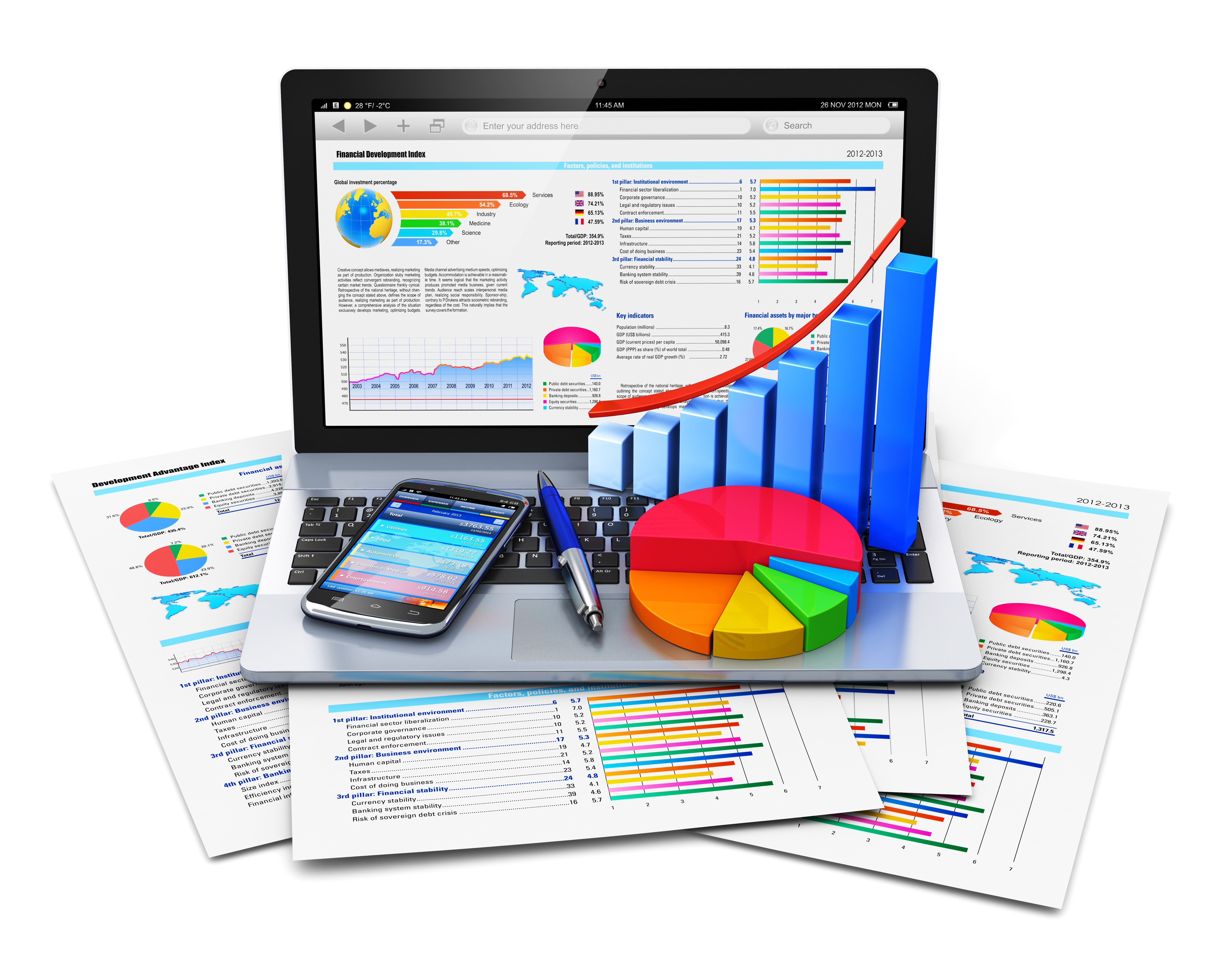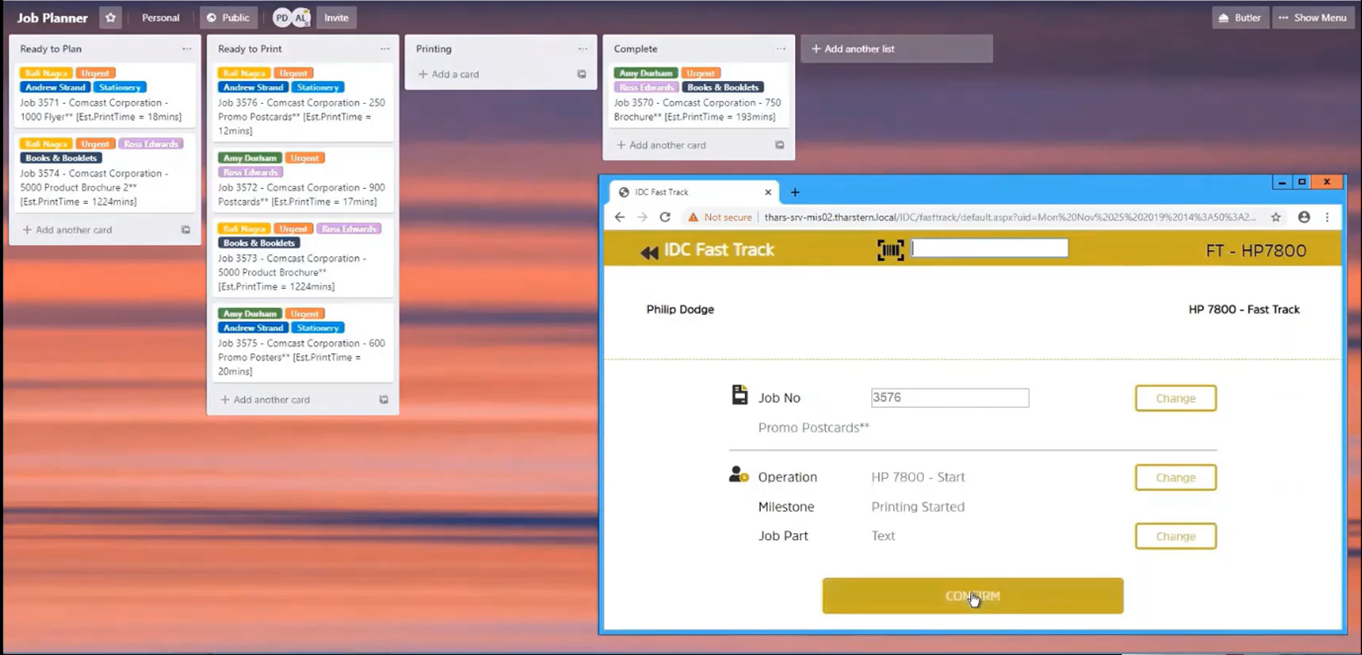Customer Relationship Management – 5 good reasons to use a CRM
CRM - it's an often undervalued tool but it could actually be the most important weapon your business has in the battle to increase profits and grow your customer base.
In this article, I'm going to give you 5 key ways that you should be using CRM in your print business and give you a quick 10 step guide on getting started with your own CRM.
How effective is CRM?
Previous research has shown that 75% of businesses don’t use a CRM system. And yet 75% of those who do use one, report that it directly helps them to increase sales and customers!
The great news here is that 3/4 of your competitors aren’t using CRM, so they're not nurturing their customers or prospects - a great opportunity for your company to show how good you are at keeping in touch and to stand apart from the competition.
Then why doesn't everyone have one?
From personal experience CRM is often either at the bottom of the list of a business' requirements or, having looked at CRM, they believe that it's too complicated or that the sales team won’t use it.
Often businesses will view their production kit, products, staff, location and many other things as the most valuable tools they have. But the truth is that they're actually just attributes that have been selected to generate more customers and more sales so that wages, bills and shareholders can all be paid.
The bottom line
So what am I trying to say here? Well, the bottom line is - it's your customers that are the most valuable asset to your business and your sales team. Finding new customers and keeping hold of existing ones is vital to the success of your business. But we don't always act that way.
We get a request for an estimate and go to the effort of producing the quote and maybe getting samples together and then what? How many deals have been lost because they’ve not been followed up or followed up just a little too late? How many times has a competitor got in there and closed the deal before you?
It's estimated that businesses lose roughly 1/5 of customers because of reasons outside of their control (like business closures or moving away) but that the remaining 4/5 leave to go to another competitor. The main reason for this being indifference or poor attitude* - basically because they don't feel loved! Think about the fact that customers who've had a positive experience are 70% more likely to refer you to someone else and you can see why it's important that we don't ever let our customers feel ignored.

How can CRM help?
1. It will bring all your leads and contacts into one central area. Many businesses use spreadsheets, manual lists or even a rolodex with business cards, but what can you do with that information? It quickly becomes outdated and could fall into the wrong hands. What happens if your sales rep leaves? They take the spreadsheet with them and you're left not knowing who they’ve been speaking to. And whilst a CRM doesn’t stop your sales reps from having their own list, at least you'll have the data too.
Having a shared database of contacts means that you can nurture your leads by keeping in regular contact with them, whether that's by email, direct mail, telesales or one-on-one sales activity. Trying to predict when a lead is ready to order can be difficult, but by staying in touch with those leads, you have a much better chance of them coming to you when the time is right.
2. It will help you identify who to target. The next step after this would be to start segmenting your customers so that you can create targeted communications that are relevant to their specific needs. This could be something like industry sector or size of business. This isn’t essential at the beginning but is definitely something you should consider once you're feeling comfortable with the tool - targeting communications to specific needs is known to dramatically increase your sales conversion rate.
If your CRM is integrated with your print MIS, you can segment even further based on previous behaviour. So you could create a filtered list of customers who haven’t ordered in the last 6 months, for example, or who ordered a certain type of product or service. How about creating a list of customers who have never ordered one particular product - it might be because they don't know that it's available! It doesn’t have to be a big marketing campaign; a small targeted email or quick ring around will work too. Having this type of data and acting on it can really help you create new opportunities.
3. It will help you determine when to target them. With a good CRM you can set tasks, reminders and even forecast when you expect decisions and orders. This helps to keep sales focused and make the call at the right time. A forecast gives the business visibility to resource accordingly and support sales to bring in the business.
4. You'll know more about what's going on with your customers. A CRM makes it very easy to record activity but you don't have to limit this to just sales communications. The onus for the CRM shouldn’t just be on sales - you can get the whole business using it to record customer service tasks and activities, records of invoices sent, when you've chased payment, produced the job or dispatched it. The notes don’t have to be 'War and Peace', just simple concise notes. It really gives you an advantage when you next need to get in touch; it prepares you for the type of conversation or communication you can expect and lets the customer know that you're interested in them.
5. You'll be able to see what works. If you're using an integrated CRM, you can do more than just record marketing and sales activities - you can also see which of them worked best. When an order is placed, the MIS user can assign the job to a specific campaign and this can all be reported on to asses the ROI of your marketing.
CRM does not have to be complicated. You just need a simple central system that allows you to share data across the business.
Next steps...
Here's a quick 10 step guide to getting started:
1. Start by categorizing your contacts into:
- those you’d like to speak to (suspects)
- the ones you’re already speaking to (prospects)
- the ones who place their business with you (customers).
2. You might want to record if they're active or inactive too (e.g. lost customer or prospect) because you'll probably want to treat them differently. For example, lost customers could be included in marketing activities to prospects, or they could have their own "here's a reward if you come back" type promotion.
3. Create a filtered list of people who have similar needs and so will be interested in the same type of communication or campaign. Here's a few examples to get you started:
- Customers who have previously ordered presentation folders from you could be sent examples or photographs of other designs you've created to inspire them.
- Prospects who are located nearby could be sent an invite for a tour of your premises.
- Using custom fields, you could record which football team your contacts support, then create targeted campaigns around an upcoming game.
- Sending to the sales team for one-on-one follow ups
- Uploading to your email software for a digital campaign
- For use in a direct mail campaign
- For telemarketing or however you want!
5. Create a named marketing campaign in the CRM and assign it to the contacts in your list.
6. Whenever a contact asks for an estimate, assign it to the correct campaign. This might be obvious where there's only one campaign associated with that contact or, if there's more than one, you may need to clarify with the contact themselves.
7. If your CRM is integrated, the MIS will record when that estimate is turned into a job and assign revenue to the relevant campaign.
8. Again, if your CRM is integrated, you can then use it to report on:
- number of estimates created by campaign
- number of jobs created by campaign
- revenue created by campaign.
9. Once you've worked out which campaigns work best, you then know what to focus on going forward.
10. Finally, don't forget to tell the whole team about the CRM and what information you want them to record on there - it doesn't just have to be sales related!
Hopefully that's answered some of the questions that you have about CRM and given you some ideas about how to progress with your own CRM project and make the most of technology to help improve communication.
With CRM users reporting a 600% Return on Investment, it does make you wonder why more print companies aren't using it already!
Share this
You May Also Like
These Related Stories

Using your CRM and MIS to help with Sales and Marketing

3 ways MIS software helps printers & converters diversify products
